We think so!
http://www.biorxiv.org/content/early/2017/07/28/169417
Caveats exist as this work is still in Peer Review and needs to be repeated but it is a fascinating topic to think about given the cannabis fields intense interest in Terpenoids. Pyrethrin is a commonly used insecticide used for russet mites and other cannabis pests and it is derived from the terpenoid pathway in Chrysanthemum (Daises). It is mostly grown at altitude in Kenya and the plants secrete the Pyrethrin in their trichomes and sometimes in their seeds as a defense mechanism for trichrome-less cotyledons and embryos. The pathway is induced by what is known as Herbivore Induced Damage (HID) and it is not unique to Chrysanthemum. It is a fascinating pathway as it highlight how plants communicate with short hexane like molecules during times of stress.

These papers also highlight the interplay of these molecules with terpenes and how stress triggers other plants to prepare for stressful times. This naturally makes one wonder if trimming cannabis next to other healthy cannabis will signal stressful times ahead.
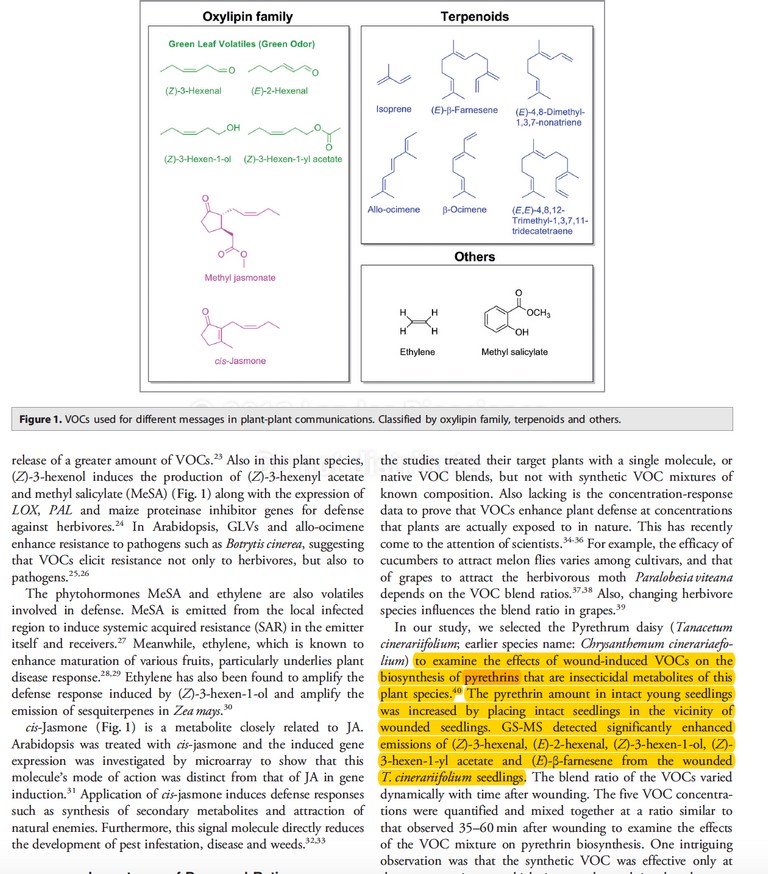
Depiction of the synthesis in the trichomes and the bidirectional transport of these molecules to embryos is an amazing thing to read about.
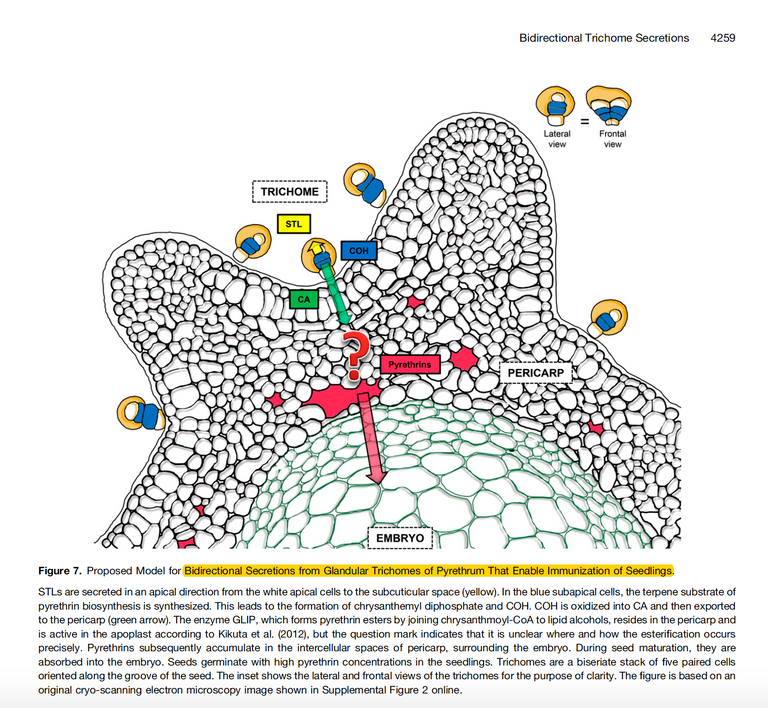
Some folks have even figured out how to synthesize pyrethrin in tissue culture.
https://academic.oup.com/pcp/article/52/3/588/1942089/Specific-Regulation-of-Pyrethrin-Biosynthesis-in
There is plenty of literature on the environmental impact and degradation of these natural insecticides which overall suggest they are fairly safe. Part of the reason for this safety is likely due to the molecules instability due to the cyclopropane bond in the molecule. Pyrolytics of these compounds probably degrade into their monoterpene subunits but this needs to be studied in more detail in regards to Cannabis and cannabis oils. Cannabis safety is a new field that needs to consider many routes of administration and varying pyrolytic temperatures.
http://www.medicinalgenomics.com/wp-content/uploads/2017/07/pyrethrin_efate2.pdf
When the endogenous synthesis of pyrethrin question was asked of us by Sonoma Labs, we performed some genomic sleuthing and I literally fell out of my chair when I saw the homology of the some of the enzymes in distant plants like Chrysanthemum. Sonoma Labs had LC-Mass Spec data that kept showing pyrethrin in flowers that were never exposed to it. Or at least that is what these growers claimed and so the blame game went on. Is it the lab? Is it a contaminant in an honest grow? Is it true use of one of the safer insecticides for plants?
Looking at Steep Hill Labs data on pyrethrin, many labs are in fact seeing these failures at the 1ppM limit (CA is toying with setting this limit down to 0.5ppm in 2018). Are there really 22% of the plants out there failing for use of this unstable and light labile compound? The environmental fate of pyrethrins (link above) highlights a 5 hour half light under lights. Would those conditions hold in the presence of a pool of free radical absorbing cannabinoids? Probably not. We need more testing on the photodegredation of these on flowering cannabis.
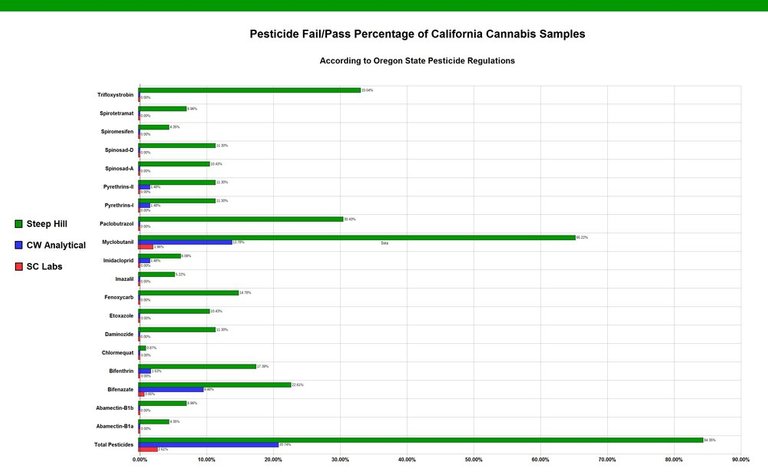
When you look at the genomic alignments from Chrysanthemum to Artemesia, Tagetes, Tanacetum, for a few of the genes in this pathway, the alignments are striking and present conserved active domains. This is by no means a smoking gun but an important piece of the confirmation.

Lets look at the other plants this pathway has been discovered in.
Artemesia spicifomis

Tanacetum cinerariifolium or Chrysanthemum
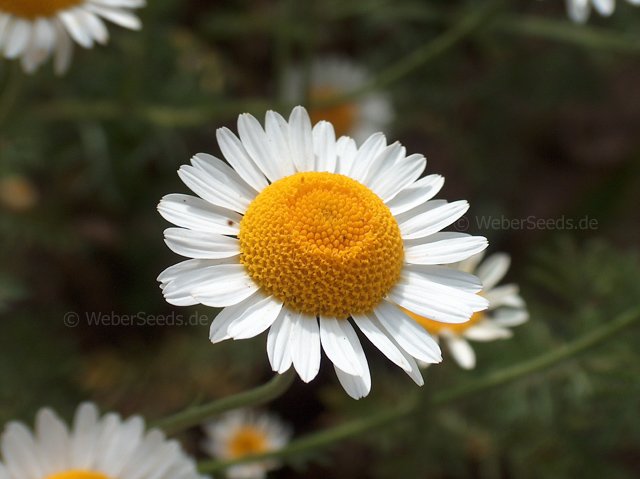
Tagetes erecta
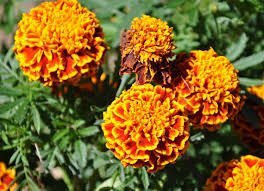
Achillea asiastica

Cannabis sativa (CBD Medihaze)
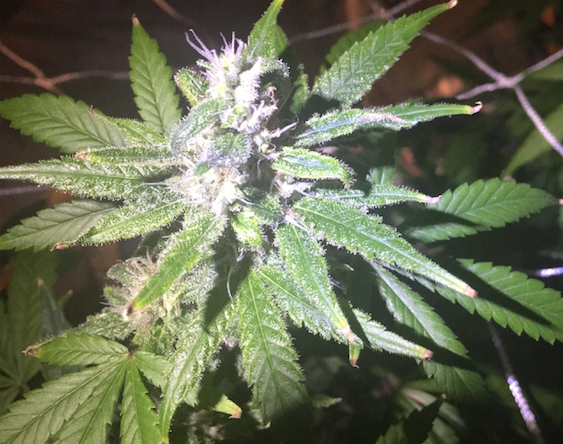
The interesting story behind the CBD Medihaze plant is that we had to get this grown at low altitude knowing altitude can increase the expression in other plants. We also had to grow this completely inclosed in a hydro/aeroponic system where the hydro-water and nutrients all tested negative for pyrethrins and there was limited exposure to other agricultural and environmental contamination. Finally, we had to measure the pyrethrin concentration in the flowers and leaves and compare that to the nutrients after growth (which were all blank).
In the end the Mass Spec found 2.4ppm Pyrethrin I in the flower and limited amounts in the leaves. This is approximately 5X the proposed CA regulations for allowable Pyrethrins. The good news is that not all plants produce this as seen in the Steep Hills data (the Steep Hill methods are also not yet published so its hard to compare notes with other labs). Some of the Steep Hills data may be legitimate use of Pyrethrins as opposed to cannabis derived. It is quite likely, pyrethrin expression in Cannabis is just as variable (but perhaps genetically predictable) as other terpenoid expression in cannabis.
In the end, we need more data but I find it interesting that Sonoma Labs became the epicenter of this study as they service a lot of growers growing at altitude in Northern California and if this finding passes peer review and is ultimately repeated we may have to consider how we treat pyrethrin positive cannabis in the future? Does it concentrate in the concentrates? Preliminary data implies, yes. Is it more harmful to vaporize or smoke? What are tolerable levels and is 0.5ppm realistic based on the limited toxicity in humans when it is approved for topical application in the treatment of scabies? Is California using the right metric regarding daily intake (10% of human body weight is probably a log scale or two too much). Many questions remain and hopefully many more will be answered through the review process and further public discussion on this topic.
Oh ya.. And if you have Russet Mites... There are very cool colorimetric portable PCR devices you can get buy for under $650 that will detect Russet Mite eggs in a 4mm hole punch of a clone. Early detection and removal obviates the need for Pesticides. No need to treat clones like disease vectors when the tools exist to screen those clones for PM, Russet Mites, Botrytis and other pests.
http://www.medicinalgenomics.com/youpcr-powdery-mildew/
hmmmmmm... so why my cannabis limp and covered in white mold
it's too humid~ limit it to 50%